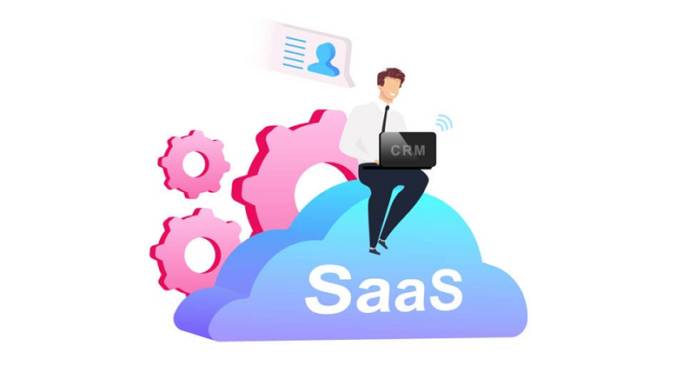Association management software is a technological solution. It provides professionals and trade associations with the features to successfully run organizations.
SaaS is an acronym for software as a service. SaaS management software is a software distribution model, in which the provider hosts applications on the cloud. The applications are then made available to end-users over the internet.
SaaS management tools are an integral part of how organizations manage their operations. The tools are provided based on a subscription model and are paid for periodically. Either monthly or yearly.
Saas eliminates the need for organizations to install and run applications. It put an end to the expenses of hardware acquisition, provisioning, and maintenance.
Business models have remarkably evolved alongside technology. Thus, when it comes to making the right choice for a business, organizations have to consider the long-term effects.
Top managers must ensure they commit to the best, most secure, and accessible tools. It helps ensure team members are focused on doing their actual jobs instead of wasting their time on administrative tasks.
SaaS has several management platforms that an organization may want to consider. They include:
- ProofHub. It enables teams to come together and work in harmony.
- BetterCloud. It handles everything in the management of SaaS applications.
- Productiv. It’s data-driven, meaning that it shows real-time insights. This enables users to plan efficient strategies for their SaaS applications.
- Zluri. It handles multiple SaaS applications from a single dashboard.
- Zylo. It helps with the utilization of resources by reducing redundant applications.
The Importance of SaaS-Based Association Management Software
SaaS provides organizations with an intriguing alternative to standard software installation. This is where they have to build the server, install applications, and configure. With SaaS, applications reside on a remote cloud-based server through the web. Organizations can use them for a certain period and pay for the software in use.
The following are the benefits of SaaS-based AMS. Let’s find out what they are.
1. Cost-Effectiveness
The use of SaaS-based AMS results in significant savings for many reasons. SaaS eliminates the upfront costs organizations have to pay for purchase and installation. Users don’t need to spend money on maintenance and upgrades either. That’s because SaaS management tools are easily downloadable and virtually maintenance-free.
The SaaS pay-as-you-go model also enables organizations to cut costs. This is because they only pay for the software they are using, rather than spend resources on unused licensing.
SaaS providers are tasked with handling the complexities of the required IT infrastructure. Organizations don’t need to worry about expensive maintenance when distributing business apps. They also don’t have to worry about choosing the right OS because it’s the providers’ responsibility.
2. Regular Updates
The majority of the SaaS brands carry out regular updates in line with new technologies. What’s more, when it comes to the management of SEO software, search engine algorithms keep changing. An organization’s chosen tools must have the ability to update when necessary.
While choosing a SaaS management software, select the best solution in the market.
3. High Compatibility
Software installations and updates are traditionally known to be expensive and time-consuming. Compatibility challenges can also arise due to version discrepancies between team members.
With SaaS, users can log into the latest upgraded version of their SaaS-based solution. It’s the responsibility of the provider to manage updates and upgrades.
SaaS assures users access to the most up-to-date version of the software. It also eliminates compatibility issues. This in turn provides streamlined focus and higher productivity.
4. Time Management and Performance
Cloud-based systems can get deployed across regions, avoiding costs associated with rollouts. Additional hardware is not needed. This means that organizations don’t have to procure and install IT infrastructure. They can even add more users when the business grows. This can be done without having to improve the hardware.
Cloud-based systems ensure maximum network performance. They’re also adaptive to an organization’s needs. They’re unlike on-premise setups whose speed and performance rely on in-house servers. In on-premise set-ups, users are made to install more hardware when the business grows.
Note that not all SaaS applications will integrate with existing on-premise apps. So ensure that the platform, software, and apps you sign up for will work cohesively.
SaaS providers are tasked with ensuring the security, availability, and performance of AMS. Meaning that they’re hassle-free and secure. This makes them an important consideration for any organization.
5. Cloud-Based Online Access
SaaS-based association management software is cloud-based. What this means is that users get to benefit from online access. So your team can access the software even while on the go.
Since the solutions are cloud-based, users don’t have to worry about investing in additional server capacity. Businesses can run with affordable and generic business infrastructure.
6. Transforming the IT Department
SaaS can transform the way an IT department plays its role in the organization. When using SaaS, the provider takes care of the testing and installing patches. They also ensure that updates are well-managed.
They take care of deploying the application and keeping it running. The provider goes ahead to monitor performance and ensure high availability.
With tasks being handled by the provider, the IT department gets time to focus on other activities. The department gets the opportunity to contribute to the success of the organization.
7. Easy Customization and Ease of Management
SaaS allows users to customize applications such that they fit their organizational processes. This is enabled without any interference with the common infrastructure. The customizations are unique to every organization and are preserved through regular updates.
The management of SaaS applications is handled by the provider. In actual fact, the implementation of management responsibilities is opaque to the client. Service level agreements govern the quality, availability, and support promised to the user.
8. Better Global Access
The use of SaaS-based AMS improves access to data from any networked device. It also makes it easy for organizations to monitor data use. It allows them to ensure that stakeholders receive the same information at the same time.
For easier collaboration, SaaS ensures that all users have the same version of the software. SaaS is also accessible from any location and all a user needs is an internet-enabled device. Thus, you don’t have to worry about getting restricted to installations.
Conclusion
Even though organizations have unique business operations, managers must consider SaaS. That’s because they’re among the most valuable options for businesses.
Their benefits include cloud-based online access, high compatibility, and regular updates. These and many other benefits keep the software relevant for a business.
Being that SaaS systems are billed in installments, the cost of implementation can be spread over a period of time.








